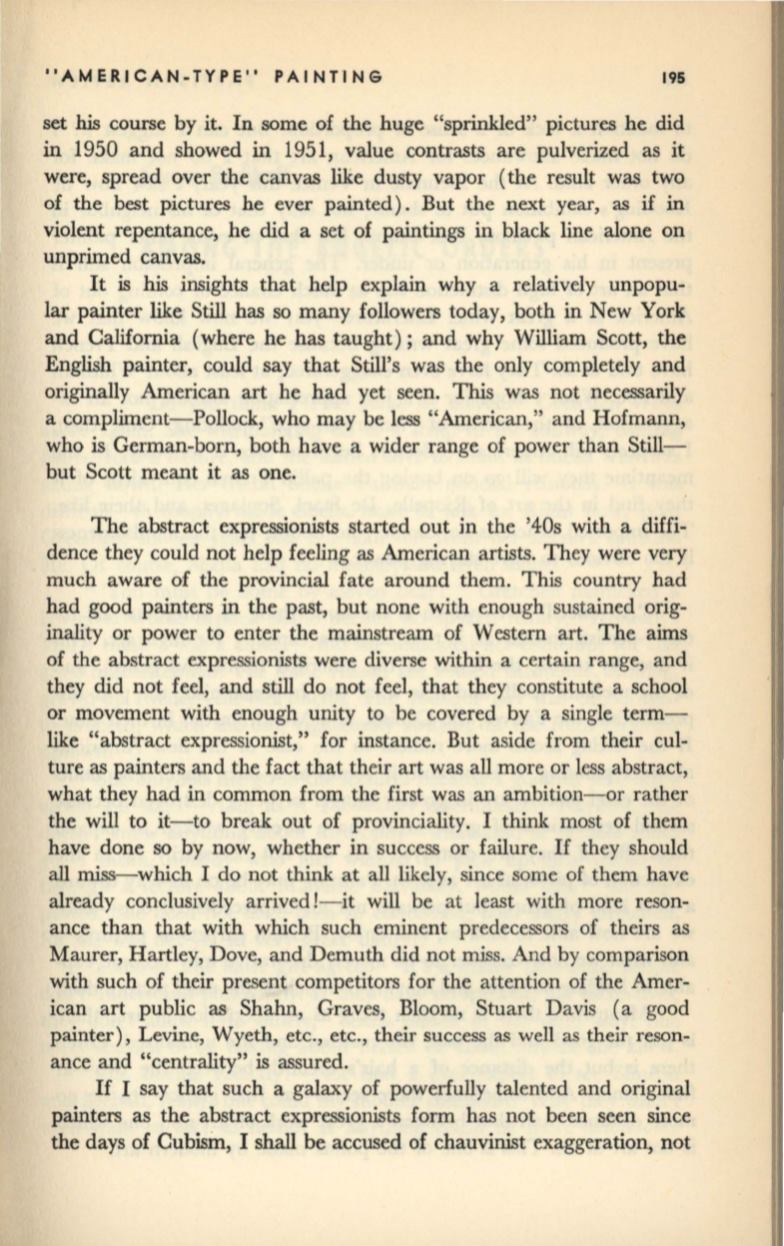
"AMERICAN-TYPE" PAINTING
195
set
his
course by it. In some of the huge "sprinkled" pictures he did
in 1950 and showed in 1951, value contrasts are pulverized as it
were, spread over the canvas like dusty vapor (the result was two
of the best pictures he ever painted). But the next year, as if in
violent repentance, he did a set of paintings in black line alone on
unprimed canvas.
It is
his
insights that help explain why a relatively unpopu–
lar painter like Still has so many followers today, both in New York
and California (where he has taught); and why William Scott, the
English painter, could say that Still's was the only completely and
originally American art he had yet seen. This was not necessarily
a compliment-Pollock, who may be less "American," and Hofmann,
who is German-born, both have a wider range of power than Still–
but Scott meant it .as one.
The abstract expressionists started out in the '40s with a diffi–
dence they could not help feeling as American artists. They were very
much aware of the provincial fate around them. This country had
had good painters in the past, but none with enough sustained orig–
inality or power to enter the mainstream of Western art. The aims
of the abstract expressionists were diverse within a certain range, and
they did not feel, and still do not feel, that they constitute a school
or movement with enough unity to be covered by a single term–
like "abstract expressionist," for instance. But aside from their cul–
ture as painters and the fact that their art was all more or less abstract,
what they had in common from the first was an ambition- or rather
the will to it-to break out of provinciality. I think most of them
have done so by now, whether in success or failure.
If
they should
all
miss-which I do not think at all likely, since some of them have
already conclusively arrived !- it will be at least with more reson–
ance than that with which such eminent predecessors of theirs as
Maurer, Hartley, Dove, and Demuth did not miss. And by comparison
with such of their present competitors for the attention of the Amer–
ican art public as Shahn, Graves, Bloom, Stuart Davis (a good
painter), Levine, Wyeth, etc., etc., their success as well as their reson–
ance and "centrality" is assured.
If
I say that such a galaxy of powerfully talented and original
painters as the abstract expressionists form has not been seen since
the days of Cubism, I
shall
be accused of chauvinist exaggeration, not


